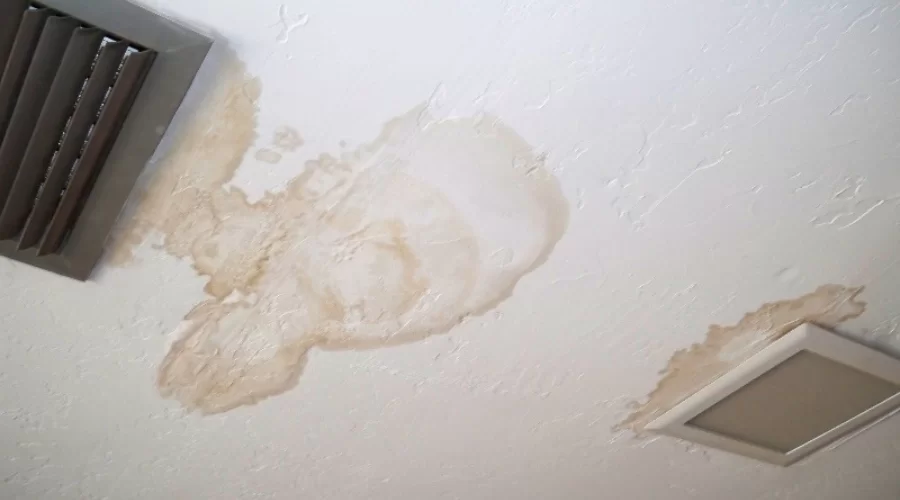The last thing any homeowner wants to discover is water seeping through a vent in the ceiling. This unexpected issue can lead to significant damage and stress. In this article, we will delve into the problem of “Water Coming Through Vent in Ceiling” and provide essential insights to help you identify the causes and effective solutions to tackle this concerning situation.

Understanding the Dilemma of Water Through Ceiling Vents
Experiencing water infiltrating your home through a ceiling vent is unsettling, to say the least. To resolve this issue effectively, let’s first explore the potential reasons behind it:
1. Roof Leaks
Roof leaks are one of the primary culprits when water makes its way into your home through a ceiling vent. Damaged roofing materials, such as missing or cracked shingles, deteriorated flashing, or poorly sealed roof vents, can lead to water infiltration.
2. Plumbing Issues
Leaky plumbing within the structure of your home can be another cause. Water supply lines, drain pipes, or even HVAC condensate lines can leak and send water into your ceiling.
3. Condensation
In some cases, condensation can accumulate within the vent and eventually drip down into your home. This is more common in areas with high humidity or when warm, moist air meets a cooler surface.
4. Blocked Vents
Blocked or clogged vents can also cause water to back up and enter your home. This blockage could be due to debris, leaves, or even bird nests in the vent.
Addressing Water Through Ceiling Vents
If you’re facing the issue of water seeping through a ceiling vent, it’s crucial to take action promptly. Here are the steps to help you address the problem:
1. Identify the Source
The first step is to identify the source of the issue. Is it a roof leak, plumbing problem, condensation, or blocked vents? Thoroughly inspect your ceiling and attic to pinpoint the problem’s origin.
2. Roof Repairs
If a roof leak is the culprit, it’s advisable to contact a professional roofer. They can assess the extent of the damage and recommend the necessary repairs, which may include fixing the damaged area, replacing shingles, or sealing roof vents.
3. Plumbing Repairs
For plumbing-related issues, a plumber can determine the source of the leak and repair the damaged pipes, connections, or fixtures accordingly.
4. Vent Maintenance
Proper maintenance of the vent is essential to prevent blockages and condensation issues. Regularly clean and inspect your vents to ensure they are free from obstructions.
Prevention is Key
Preventing water from infiltrating your home through ceiling vents is the best approach. Here are some proactive measures to minimize the risk:
- Regular Roof Inspections: Schedule routine roof inspections to catch and address any potential issues early.
- Plumbing Maintenance: Keep plumbing systems in good working order and promptly address any leaks or issues.
- Proper Vent Maintenance: Regularly clean and inspect vents to ensure they remain free from blockages or condensation.
Conclusion
“Water Coming Through Vent in Ceiling” is a distressing issue for homeowners. By understanding the potential causes and taking proactive measures, you can safeguard your home from this unexpected problem. If you find yourself facing this issue, acting promptly to identify and address the source of the problem is crucial to prevent further damage. Don’t let water through your ceiling vents disrupt your peace of mind; take action to keep your home dry and secure.
